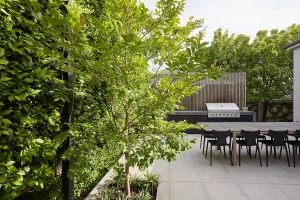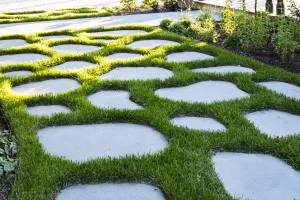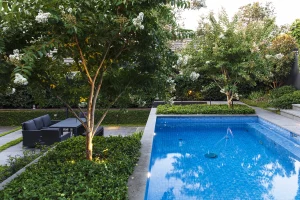Keep it simple:
Use mostly larger pots rather than loads of small ones and create varying levels of perspective and interest.
“You want to have green on the boundaries but don’t push it all to the back. Have one or two strategically placed plants nearer to the property – which give a glimpse of what’s around the corner.”
Rules of arrangement:
Choose the shape of your pots and then stick to it because a mix of round pots and angular pots “never works”. With round pots – use an odd number, varying in size and “arranged in an apparently disorganised cluster”.
With angular pots – arrange in a more “regimented” style, in rows or with two ‘feature pots’ that you walk through, so they punctuate and divide the space.

Mix it up:
Mix up what and when you plant to have a colourful mix all year round.
Use the largest pot for a citrus or fruit-bearing tree and then sow a mix of veggies, herbs and edible flowers. Also, make use of the soil around the trunk of the citrus tree to sow herbs like oregano or thyme but never mint – it strangles the soil, and must be potted on its own.

Green guides:
Espalier trees (they grow in rows along a wall) – like citrus, apple or even pear, apricot or cherry, can do wonders for smaller gardens and use up next to no space.
“You’ll have a high yield citrus tree and use up only 100mm of garden space and you’ll have a lush green wall.”

– by Kami Ramini



